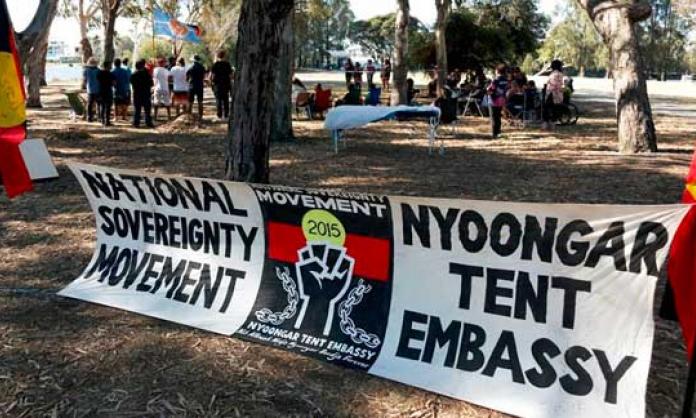Indigenous activists in Western Australia have established a refugee camp in response to the state Liberal government’s plans to close 150 remote Aboriginal communities, which it claims are not worth the cost of providing water, electricity and other basic needs.
“We called it a refugee camp because that is what we are – refugees in our own countries”, says Bella Bropho, long-time Perth Aboriginal activist with the Nyoongar Tent Embassy. “We’re not moving till the state government recognises that if you take the land from people, you make them refugees.”
The camp is organised by the Djurin Republic Executive Council, which is currently occupying Matagarup (Heirisson Island) in Perth’s CBD.
The closure of other townships, such as the Swan Valley Nyoongar Community, has resulted in homelessness, higher arrest and incarceration rates, suicide and forced removal of children by the state.
Premier Colin Barnett is attempting to change the narrative on township closures. In an interview with News Corporation website PerthNow, published on 5 March, he said that the review of the communities was driven by the need to protect children from “appalling mistreatment” – yet again invoking the bogeyman of child abuse and neglect that was used to smash up Indigenous communities in the Northern Territory from 2007.
Djurin Republic Executive Council has written a letter to the WA governor. “The actions by the WA government, supported by the Commonwealth of Australia, are an act of warfare against Aboriginal citizens which is now resulting in genocide”, the letter says. “The lands of Heirisson Island (Matagarup) have now been designated as a refugee camp for all such Aboriginal persons and their families.”
In the PerthNow interview, Barnett acknowledged that the closures would cause “great distress”, but maintained the government doesn’t have a choice. It’s not true. “They got their big development here, the other one at Elizabeth Quay – they can spend money on that. Why not on our remote communities?”, Bropho asks. Elizabeth Quay is a multi-billion dollar redevelopment on the river’s edge of the CDB, just 2km from Matagarup.
“It’s the development that’s going to kill us. [Aboriginal land] will be sold to developers, to mining leases. They don’t care about the communities or the people”, she says.
On 3 March, Aboriginal affairs minister Peter Collier told ABC News, “[W]e’re going to do something that’s going to be much more sustainable for those communities.” How kicking people off their homelands is more sustainable than funding them properly is anyone’s guess.
Bropho sums up Aboriginal activists’ feelings about the closures: “We have to keep going, we have to use people power. We have to sit right here until they listen. That’s our spiritual land, and we’ll do whatever we can to hold onto it.”




